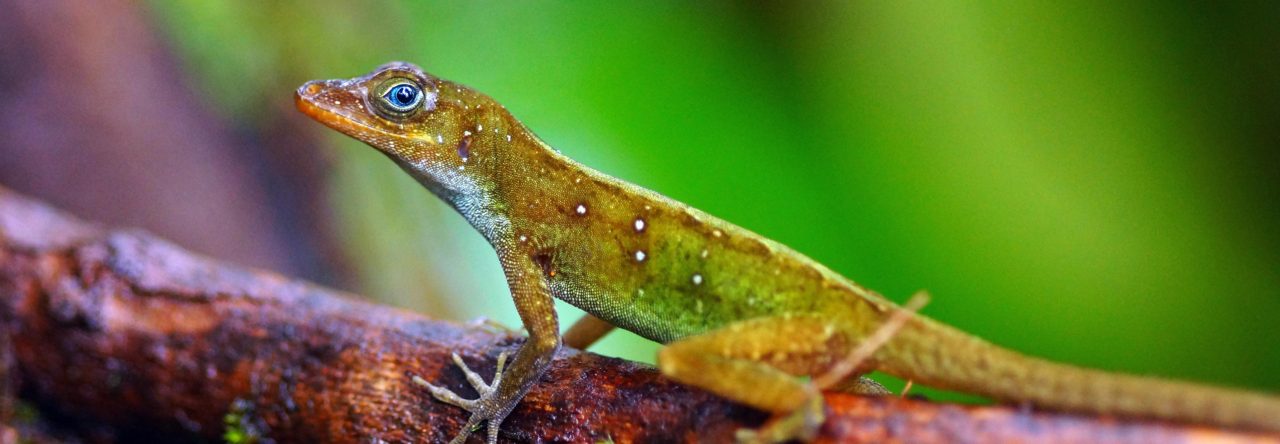Over at Chipojolab, Manuel Leal has a video and a photograph from last week’s field work on Abaco, Bahamas. The video is of yours truly, failing to noose a wily brown anole, Anolis sagrei. More interesting is the photo of Leal next to an odd looking piece of equipment. What is that gizmo? Here’s a close-up:

By slowing turning the knob at the lower right, the tweezers are pulled downward, allowing the dewlap to be pulled out to maximal extension.
This Rube Goldberg contraption is used to pull out a male’s dewlap to take color readings with a spectrophotometer. Turns out that to get accurate readings of dewlap color, it is very important to take the measurements in a precise and replicable way. By gently pulling the dewlap out fully, the Leal Dewlap Extender (TM) pulls the dewlap to its fullest extension in a manner that can be repeated from one individual to another. Moreover, because the dewlap is fully expanded and not pressed against a surface, the scales on the dewlap are not deformed, thus preventing specular reflection (something you don’t want). In addition, the unfurled dewlap is presented precisely perpendicular to the light source.

Portable x-ray machine. The source of the x-rays is the silver box mounted on the little plastic table. Lizards are placed on the gray rectangle on the floor, which is the imaging camera which receives the x-rays and transmits the image to a computer.
We’re actually using all kinds of cool equipment to measure lizard phenotypes, with the goal of investigating whether lizard populations on different islands have diverged from each other. The most exciting addition to our research arsenal is this baby, a portable x-ray machine, which allows us to get very nice images of the lizards. Much better than measuring with a ruler, and we can archive the image for future examination!
 Also, we’re interested in examing the lizards’ toepads, which we do with a 4800 dpi scanner.
Also, we’re interested in examing the lizards’ toepads, which we do with a 4800 dpi scanner.
This, of course, is only part of our work. We’re interested in how the populations fluctuate in size through time. We’ve completed the censuses on a set of very small islands we’re monitoring as a side project. The population estimates seem to be in the same ballpark as last year, although one population, which was quite low the last two years (approx. 8 and 9 lizards, respectively in 2009 and 2010), has inexplicably exploded to an estimated 48 individuals! (actually, the inexplicable part was the previous crash to < 10 lizards, because the population was quite healthy before that)–Inbreeding depression? Rat invasion? We don’t know.
However, even though the population sizes are about the same, the lizards themselves are not. The largest lizards are not very big—we have found few really large males or females. In addition, there aren’t many juvenile males, and very few very young lizards. Clearly, the size distribution has changed. It was a dry year, and my guess is that what happened is a combination of older animals dying (hence the paucity of very large lizards) and a shortened reproductive season, producing individuals which have grown up to be the adults we see, but no younger individuals. But, if the oldsters died and the breeding season was curtailed, how do we explain the fact that the population sizes have not decreased? Curious. One great thing about these projects is you never know what to expect from one year to the next.
- Evolution in Real Time on Lizard Island - March 23, 2025
- Spider Snags Adult Anolis osa - March 22, 2025
- An Homage to the Green Anoles of New Orleans - March 21, 2025




chipojolab
Nicely done, one minor addition, when we began this experiment we were well aware that there was a high likelihood of failure. At best it was a 50-50 chance to loose half of the populations. However taking risks is what makes field experiments so interesting. Once in a while, you hit the jackpot.